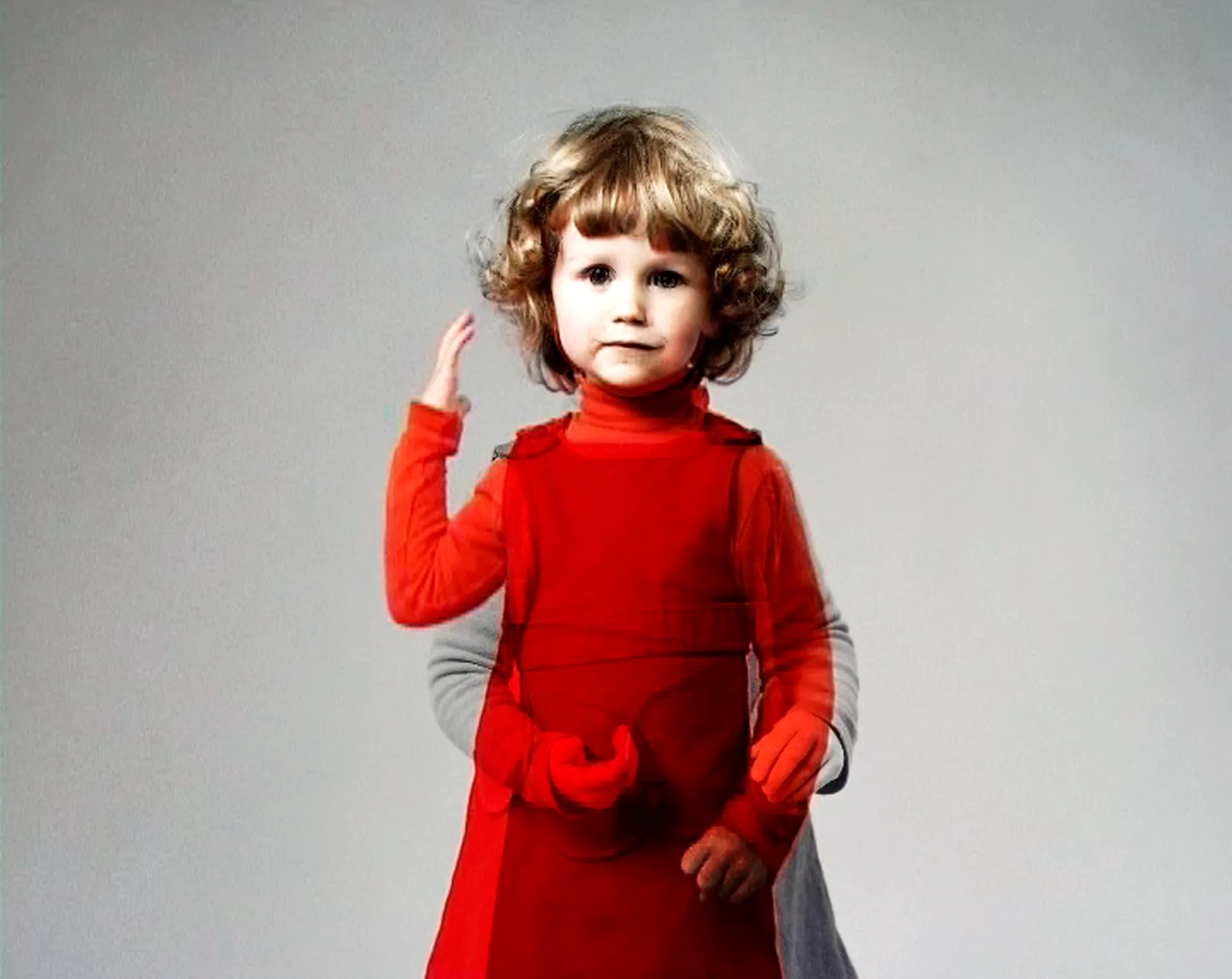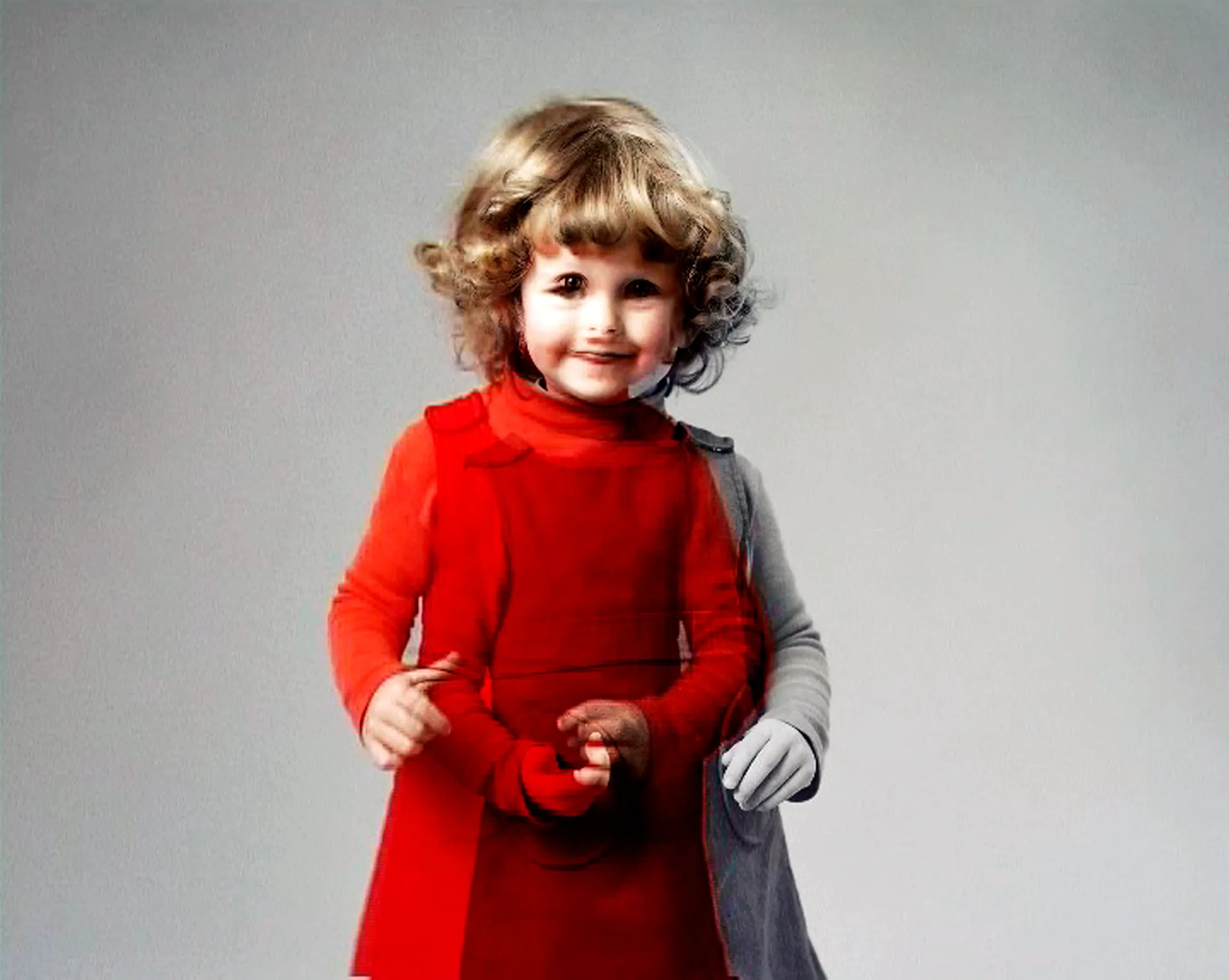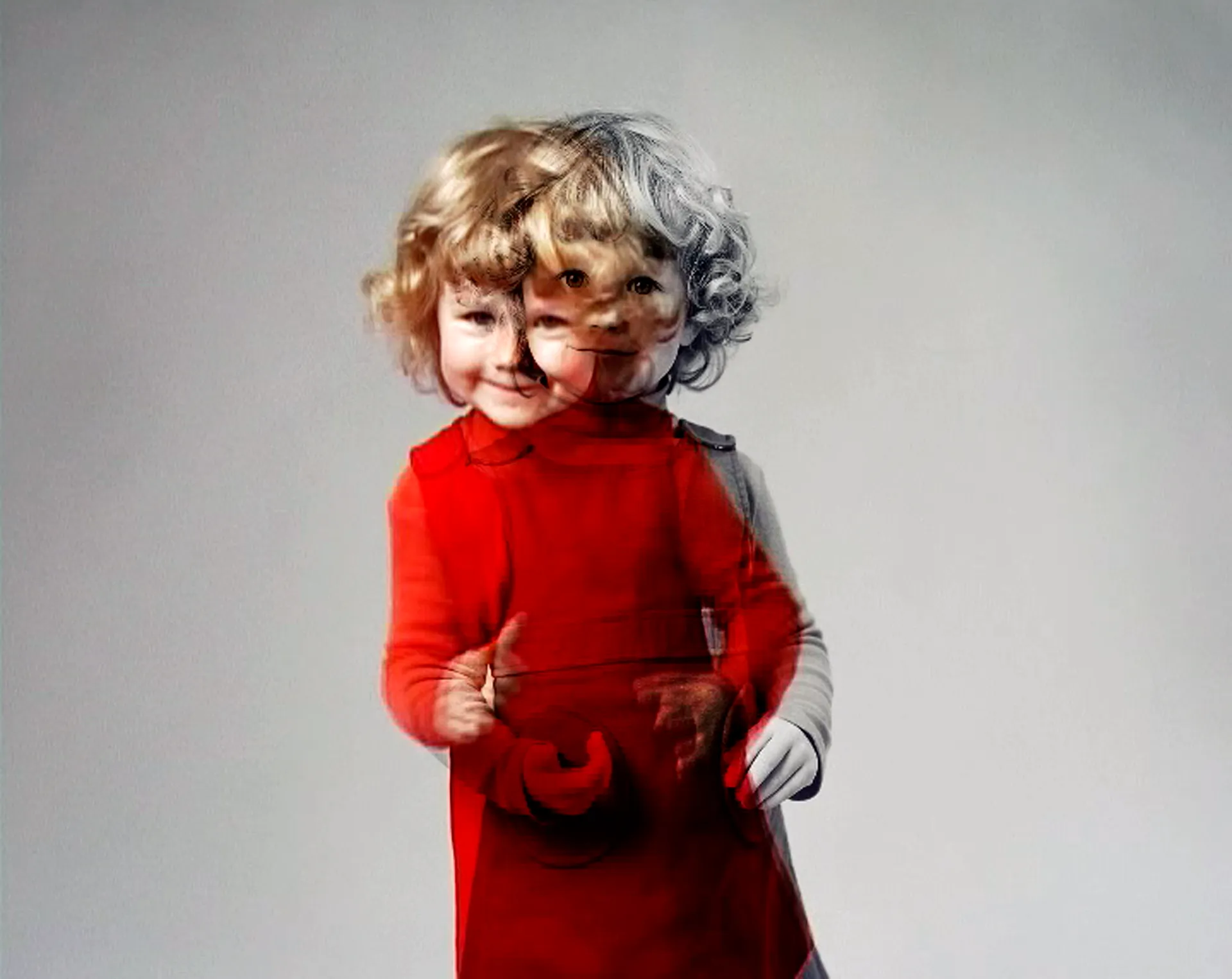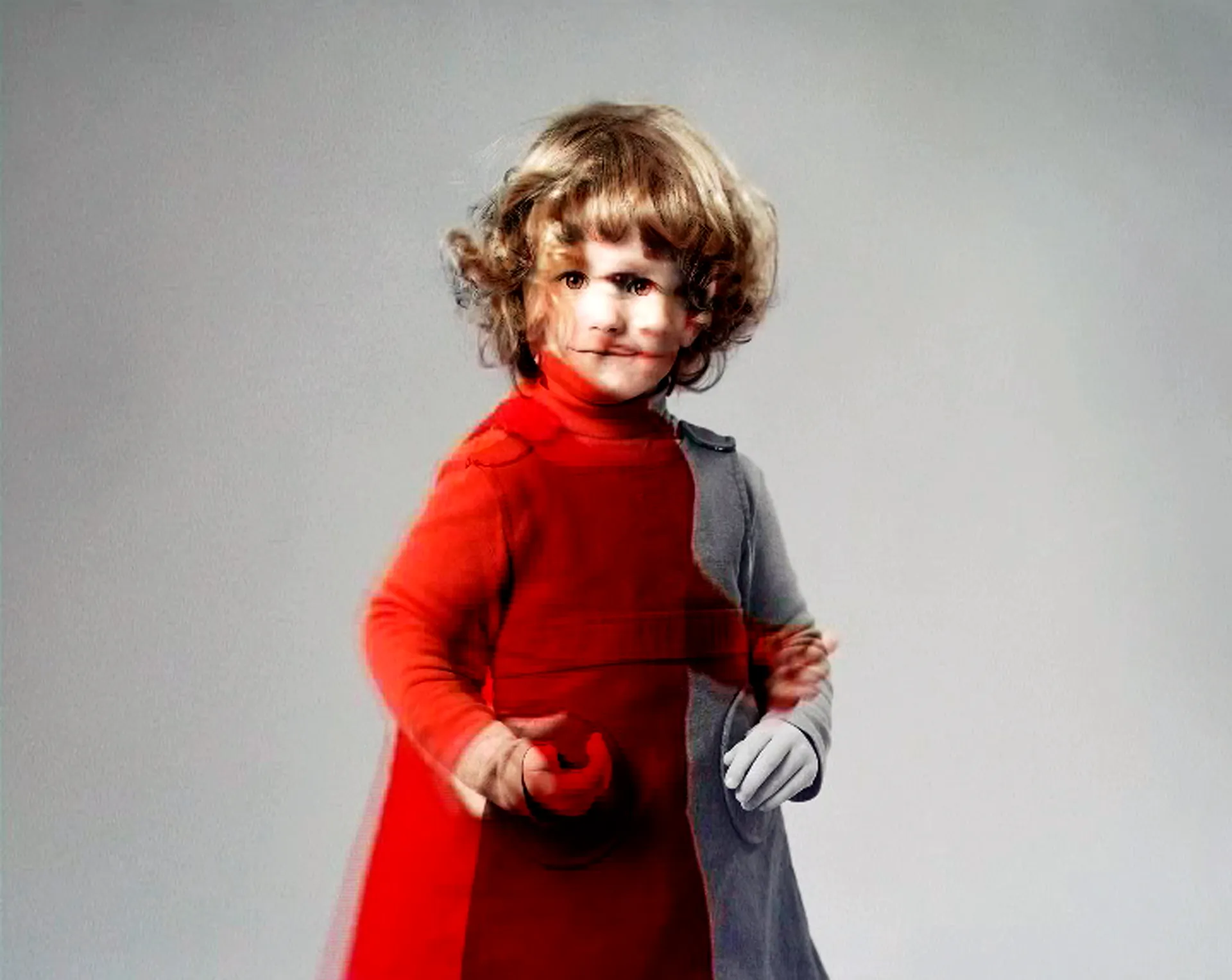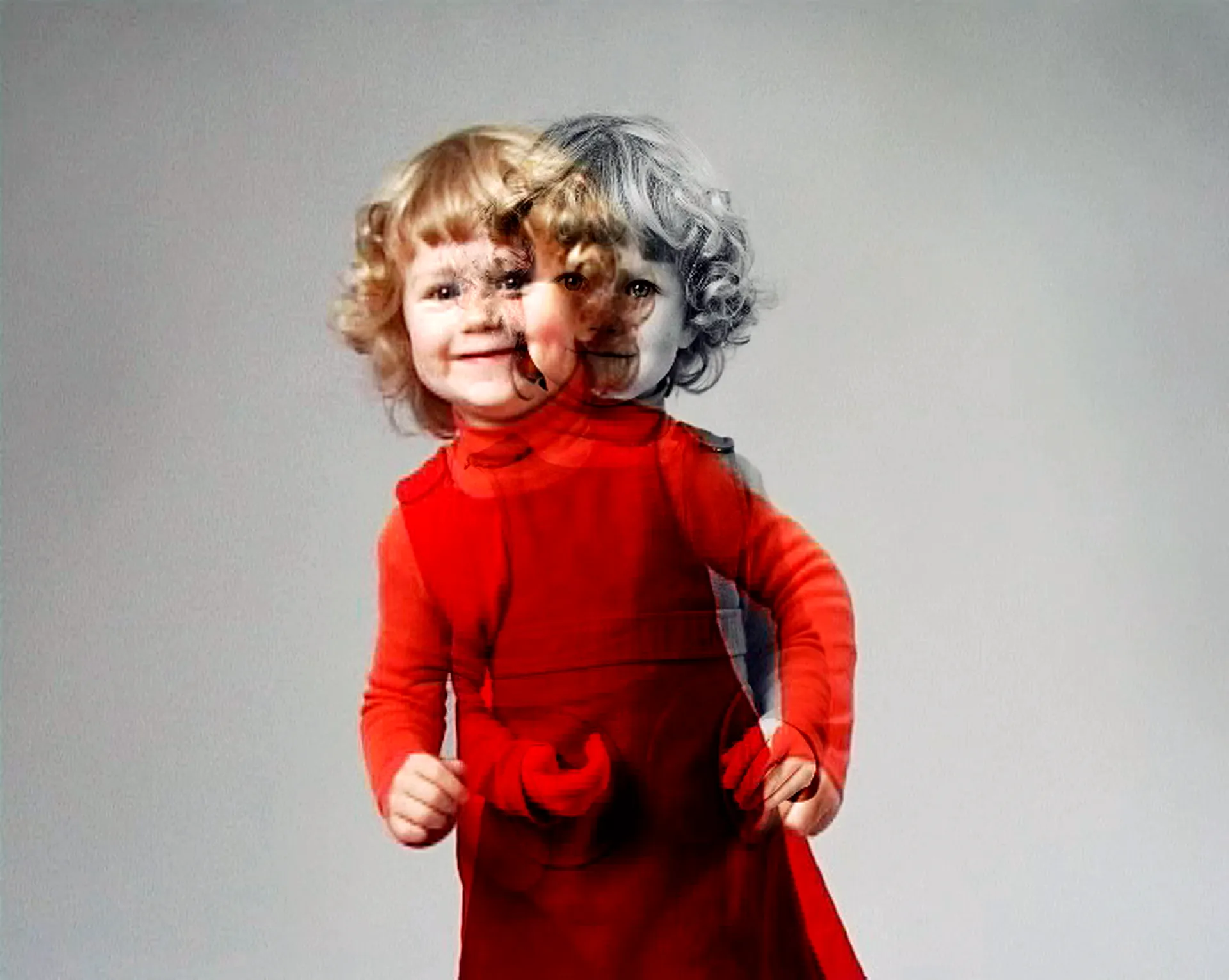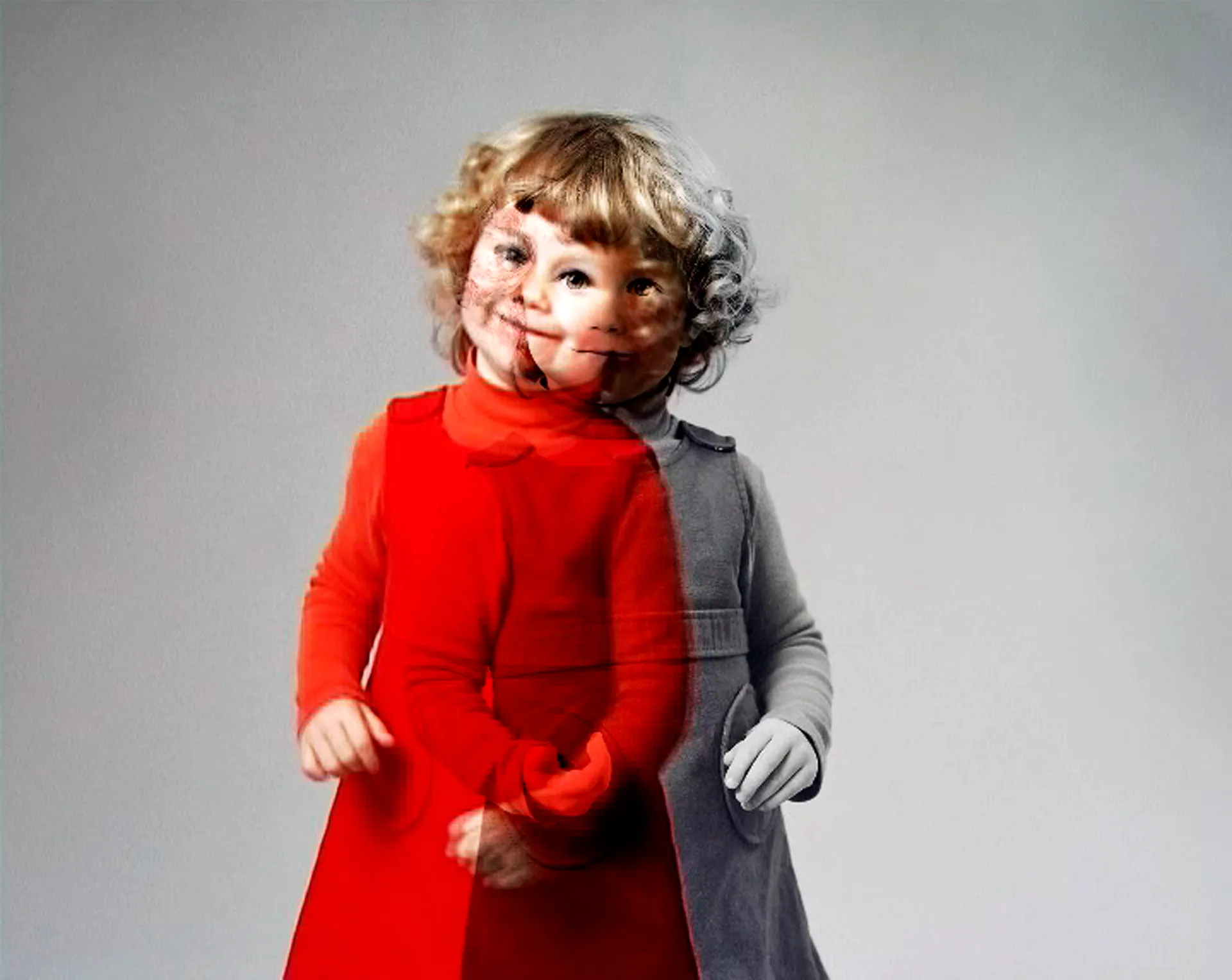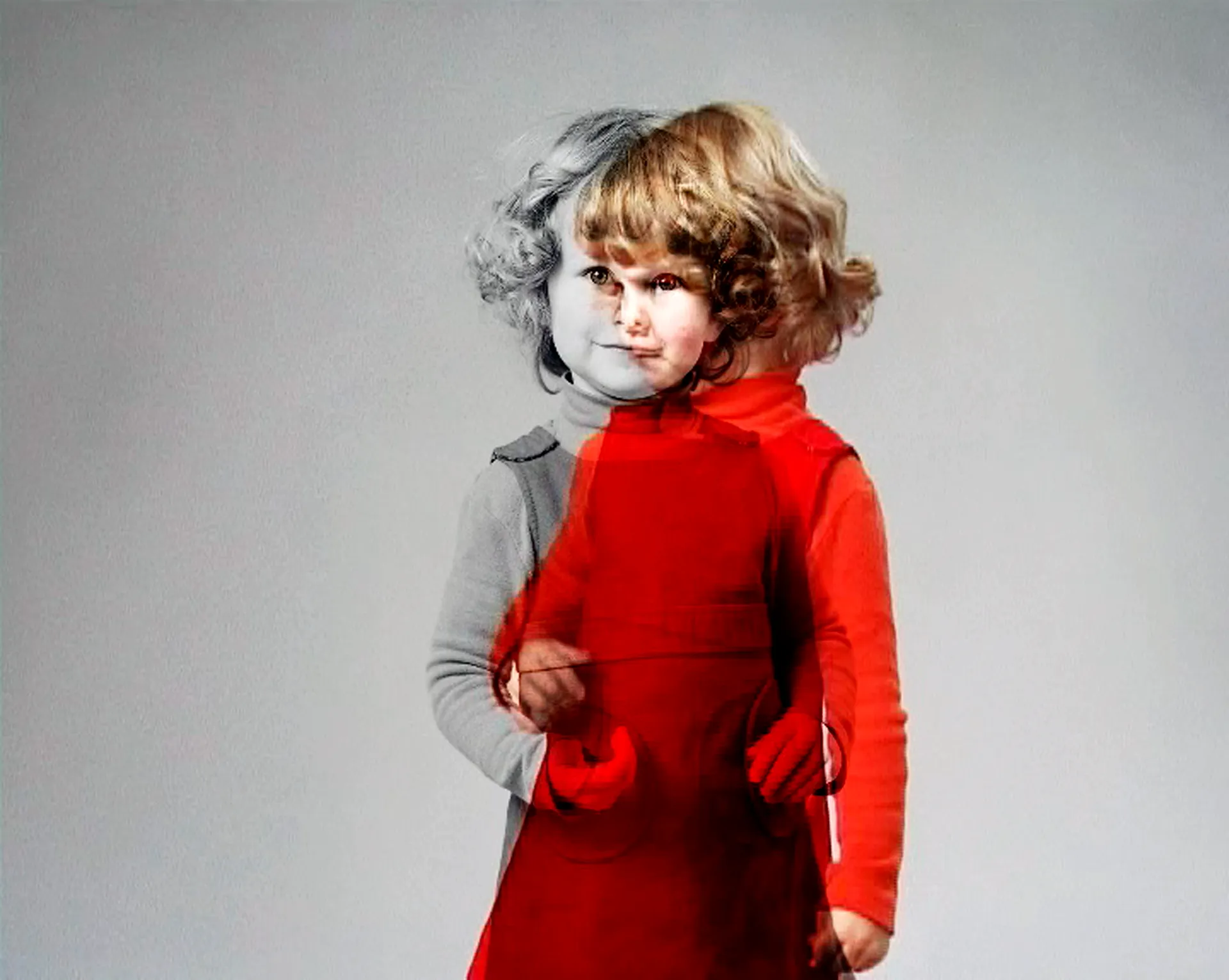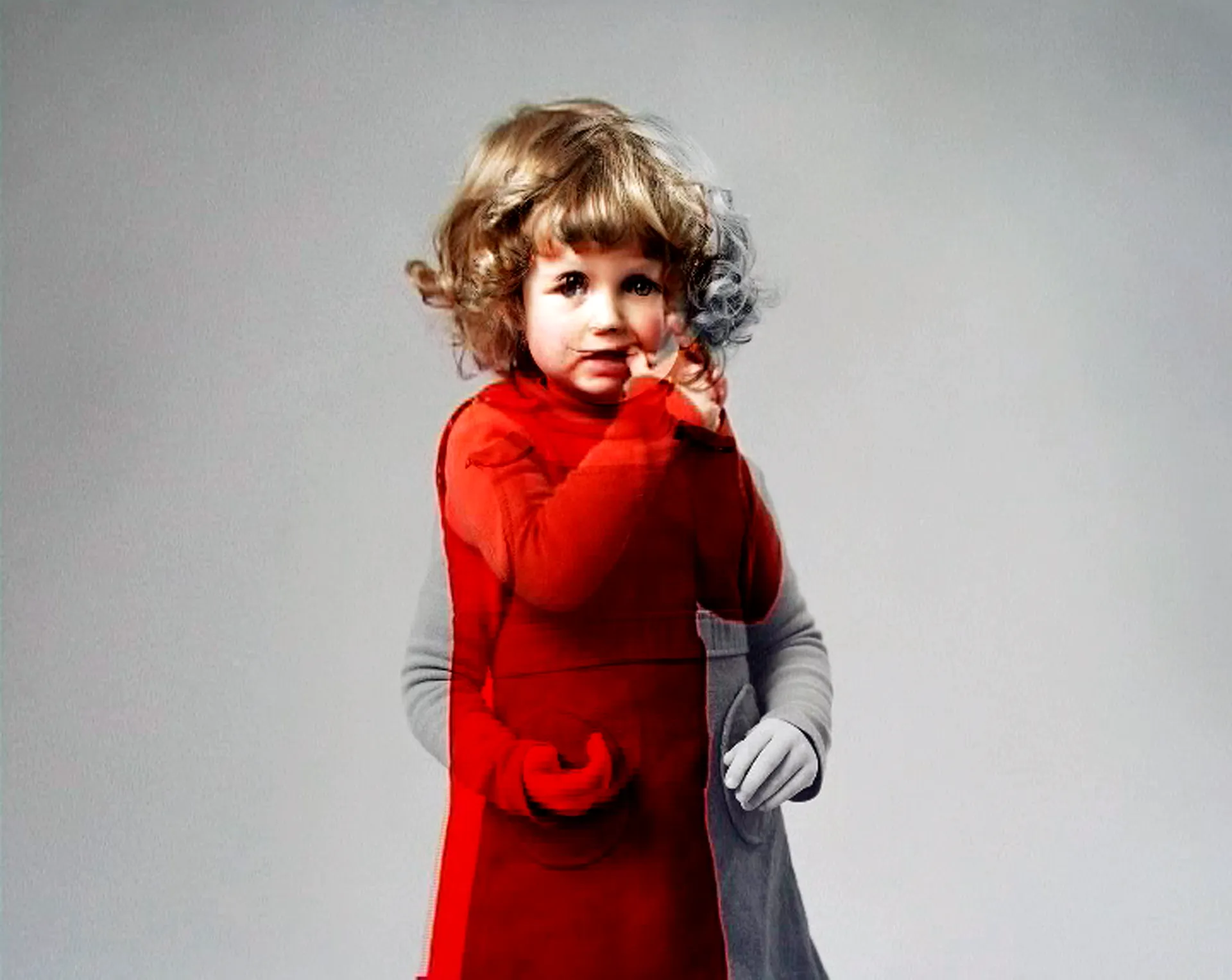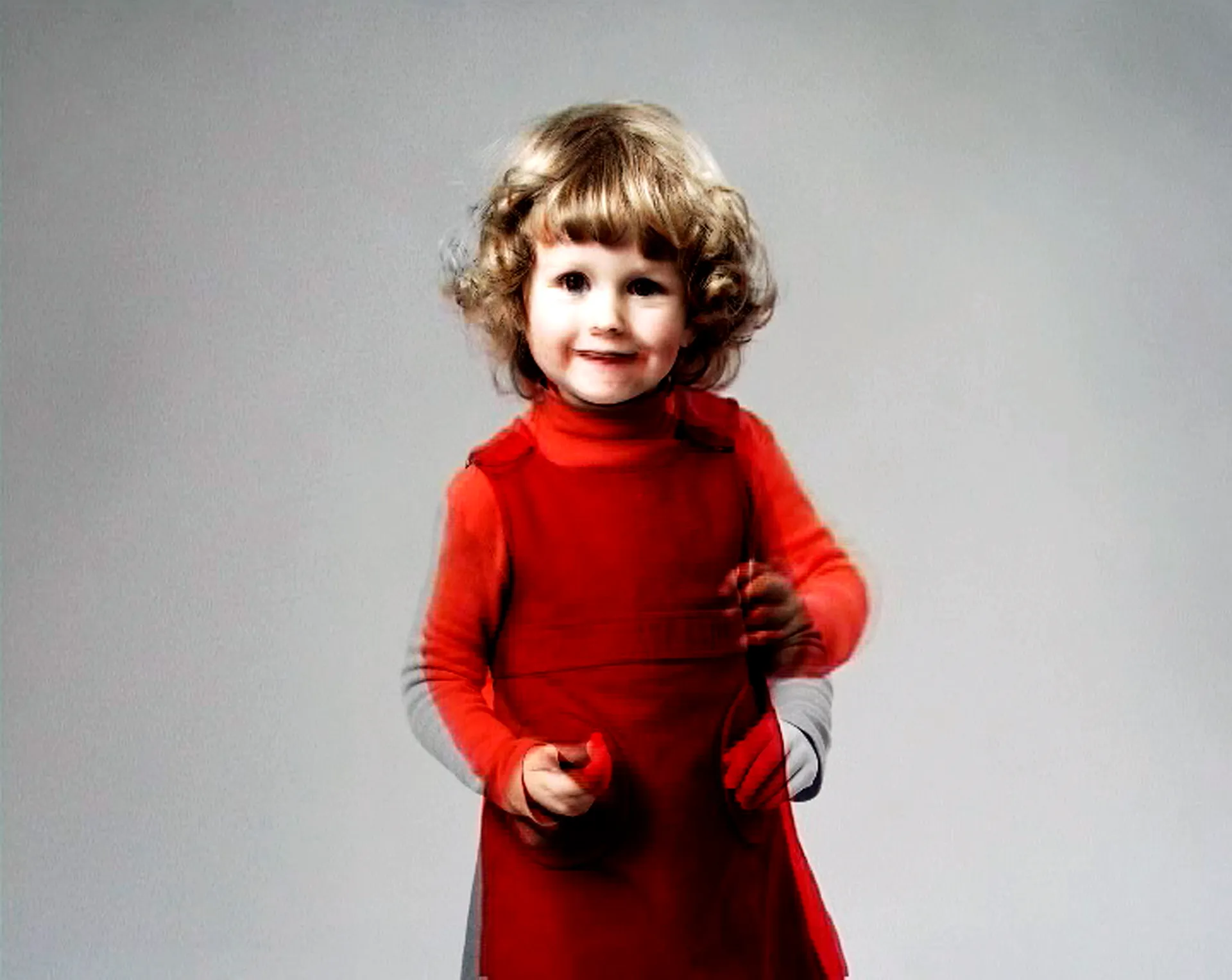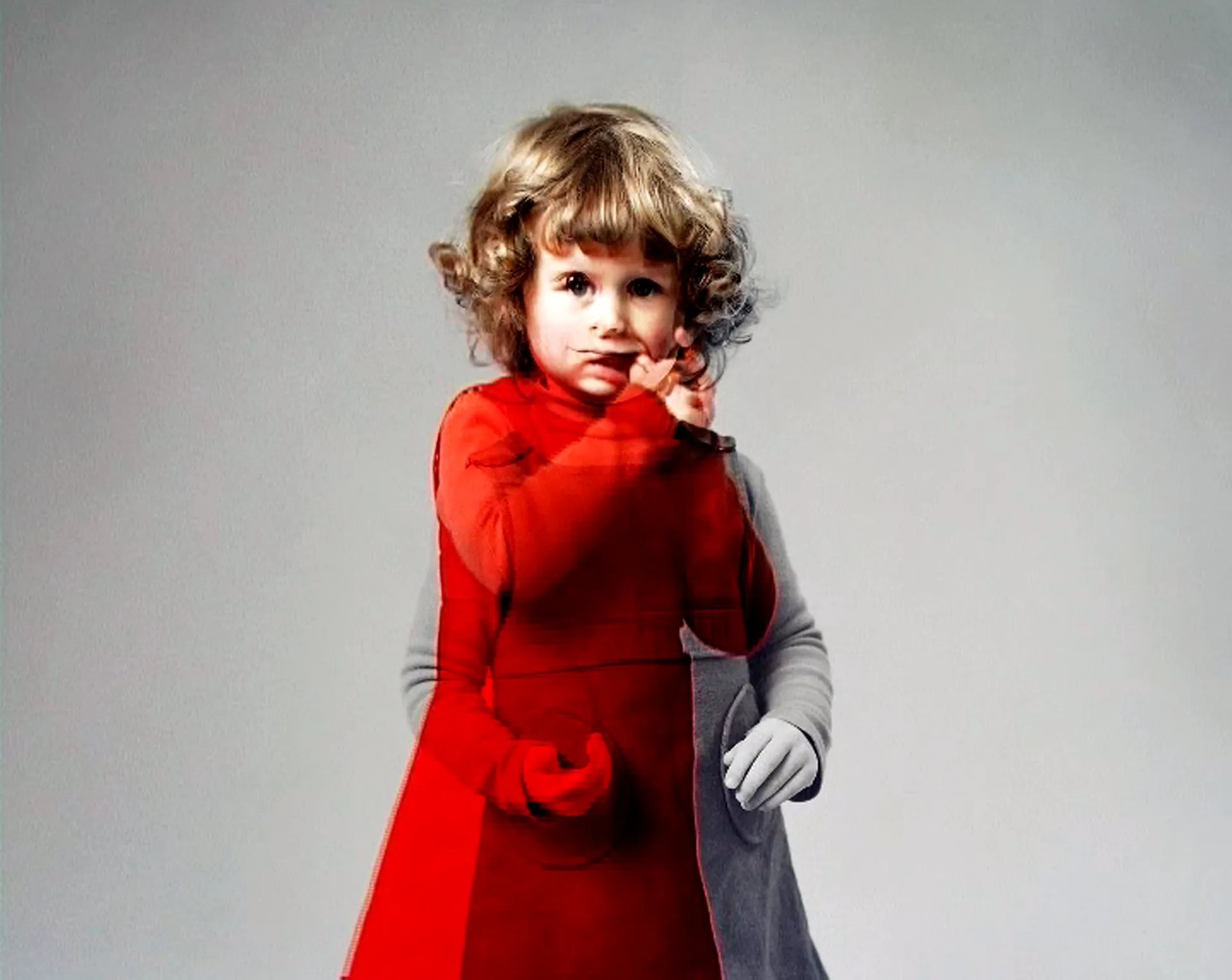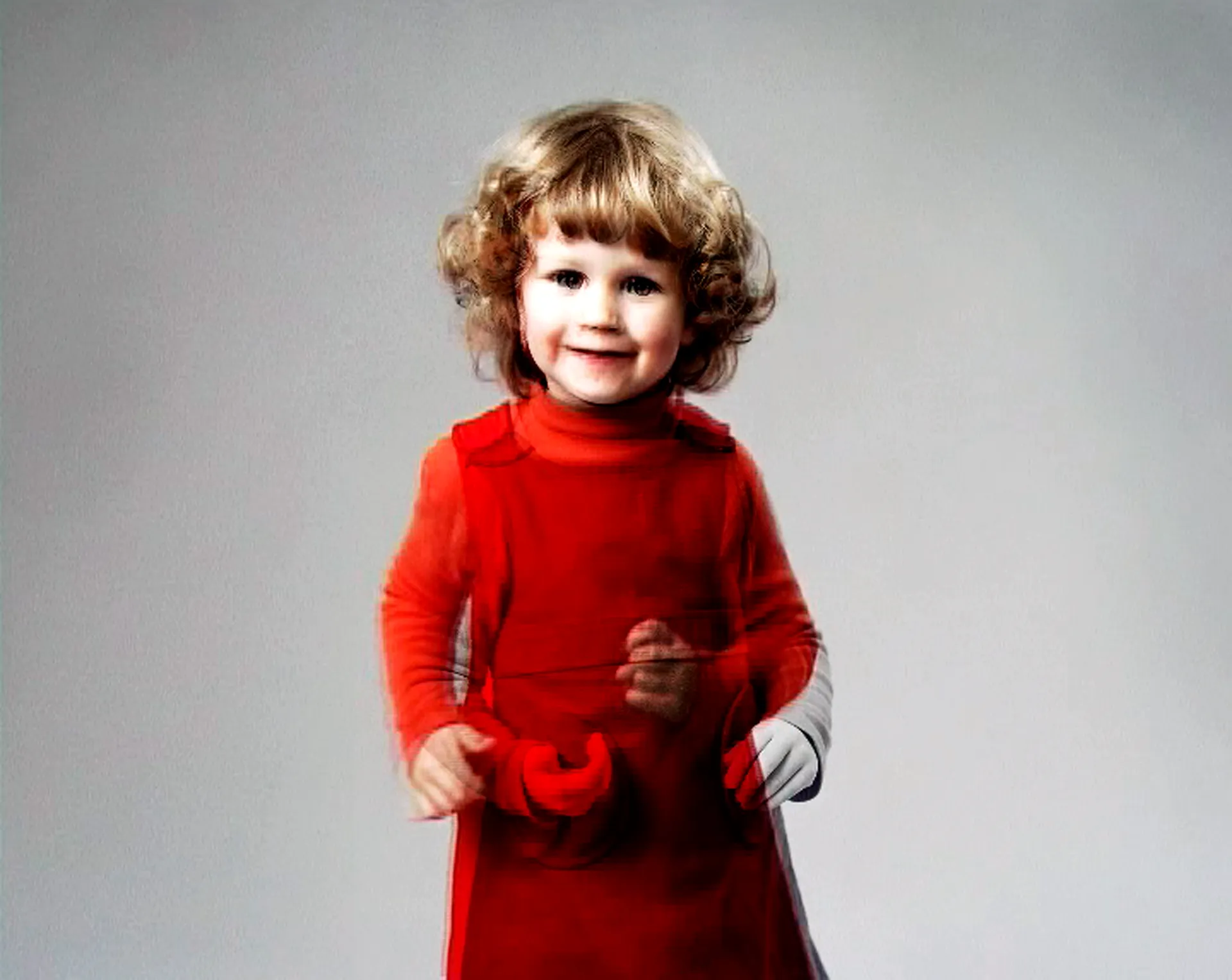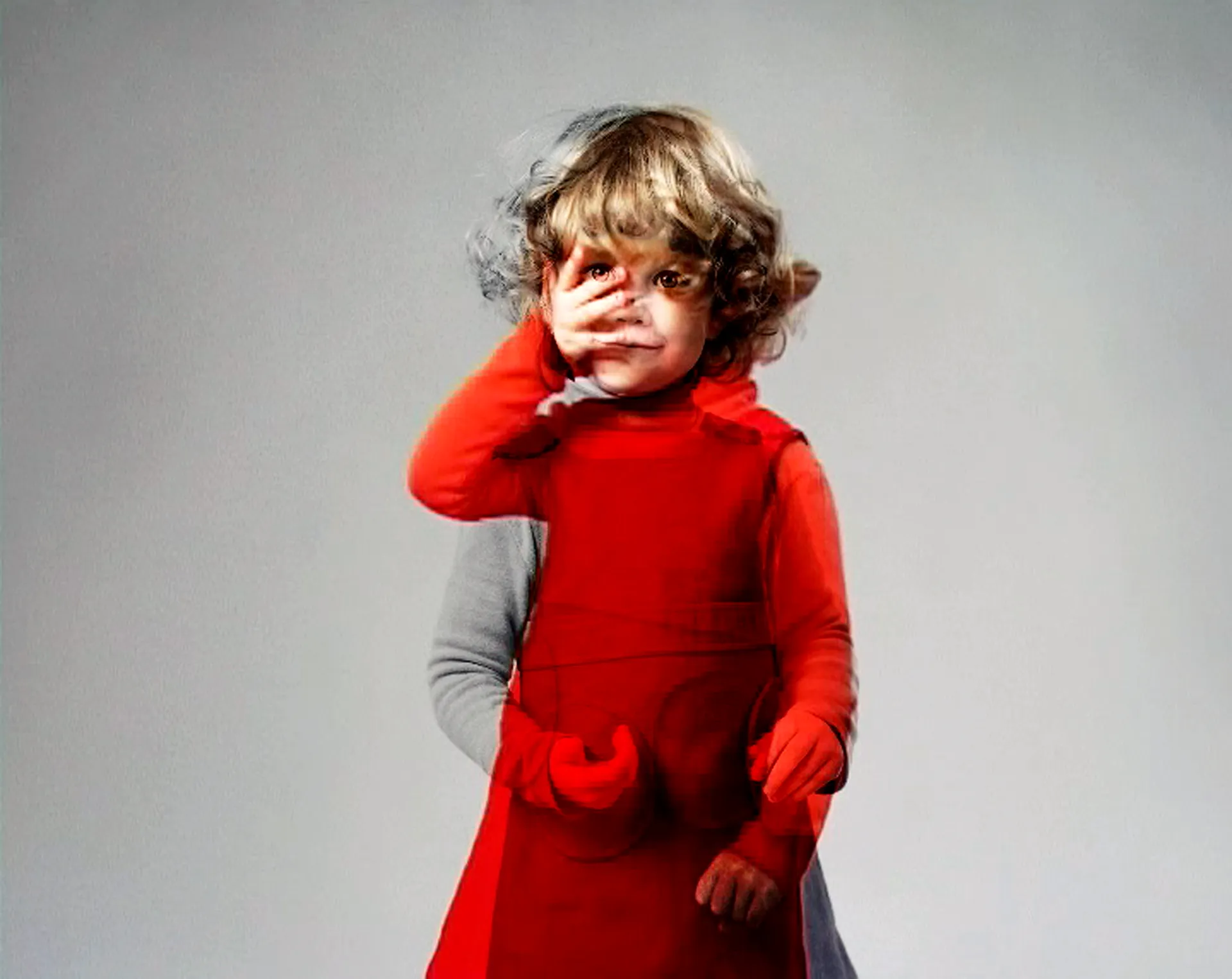Karlotta
2003 — 2004
Various Media
A girl in a bright red dress dances for a moment, forgets the camera and then focuses on it again. There are two images on top of each other, a black and white portrait and a video, moving and a still image. Opposites being combined into one. At times the two images can be seen separately and at times they blend into one, into a third image.
Juxtaposing these two images opens up questions concerning photography, time and identity. The photograph seems to suggest one quite permanent identity for the girl, a layer that seems to stay the same despite the lapse of time. The video in turn brings in change and time. It brings the work closer to our experience of time and being. Still the video is not in ”our time”. The speed of it is slowed down dramatically. It seems that things pass so fast in ”real time” that it is hard to get hold of them, to recognize them. When watching the work two different times meet, that of ours and the slowed down time of Karlotta. Maybe this slowing down makes us as viewers slow down as well. Maybe the video gives us a reason to be still and concentrate for a moment.
Karlotta is shown not only as a video projection, but as still images as well (Karlotta (Still #1–19)). The basis for the still images is the black and white portrait, a video still is attached to it and the files are printed on photographic paper. The images are then mounted under Plexiglas (Diasec). The series consist of 19 images. Karlotta, the video, and Karlotta stills refer to one another. They are both on the thin line separating a still and a moving image. The video has clear references to photography, but it still is a video, a moving image. The stills on the other hand are clearly photographs, but have a close reference to a moving image. 19 images as such refer to time and change, but already looking at one of the images and recognizing a frozen video frame bring into mind the elapse of time. The 19 images can also be seen all at once. Their time is very different to that of a video or to that of ours.
So what is it with this third image, the combination of the photograph and the video? It consists of the two images, but it clearly is neither of them. It seems to refer to something uncontrollable and unknown maybe even to ourselves. Many people interpret it as being scary or uncanny. Something we know that exists but is difficult to locate and freeze for an observation. It is said that photographs, and portraits especially, work as grounds for our projections. If this is so, then the uncanny we see in Karlotta lies not only in Karlotta, but in us as well.
Karlotta, 2003
Video projection
MiniDV on DVD
Duration 2 min 30 sec
Karlotta (Still #1–19), 2004
Digital C-print
Diasec
56 x 76 cm
Both works have been produced by Galerie Anhava.
